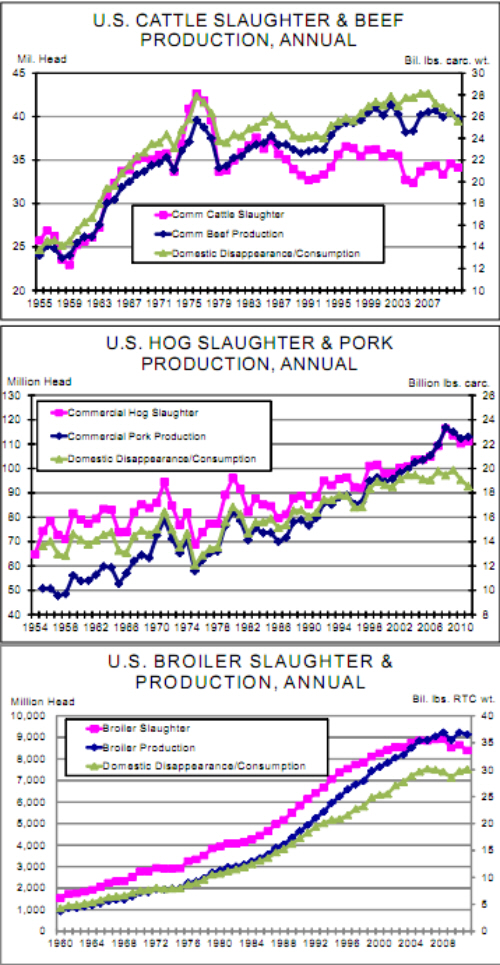



CME: 2011 Year of Adjustments for Meat Sector
US - 2011 will go down in the history books as a year of continued adjustments for the US beef, pork and broiler sectors, write Steve Meyer and Len Steiner. All
three were still adjusting to higher feed costs in an effort to restore long
-run profitability. The differing biological characteristics of the three
species, of course, were impacting those adjustment processes.
The
vaunted flexibility that the chicken’s short reproductive cycle provides
to the broiler industry proved to be both a blessing (can react quickly)
and a curse (quick reactions leave you open to unexpected reversals).
The curse of a long reproductive cycle prevented the beef industry
from going for the “head fake” of lower corn prices in 2009 and early
2010. Mother Nature, of course, made sure that the beef industry did
not launch itself into a premature expansion by severely impacting
grazing conditions in some major beef cattle regions. Meanwhile, the
pork industry appears, for the moment, to have made a painful reduction and, perhaps, learned its lesson from quick output reversals of the
past that led to severe price pressure.
The charts at right show annual data for slaughter and production for the three major species. The overall trends and patterns
are, we think, very telling. Among the lessons are:
Each species has relied upon heavier slaughter weights to increase output. The practice began with hogs in the ‘60s when
some major improvements in leanness and, consequently, feed
efficiency, began. Cattle followed in the ‘70s and chickens joined
the trend to higher weights in the ‘80s.
This trend is not over — at
least for cattle and hogs. Feedlots, hog buildings and packing
plants are all denominated in HEAD. Products are still sold by the
POUND. Increasing POUNDS PER HEAD is an obvious and
easy way to increase revenue per unit of physical plant.
The only
limit will be the size of cuts but new processing techniques will, we
believe, solve most problems that arise there. The chicken sector
may be different because its weight increases are driven by, in
essence, a separate boneless/skinless breast business — which
has NOT performed well of late.
There was, for many, many years, no such thing as a chicken
cycle. The primary reason, of course, is that chicken demand
increased steadily and, due to that reproductive cycle, companies
could respond quickly. The growth pattern has obviously been
slowing, though, and some cyclical characteristics are appearing
in the annual data. Will they continue?
There was, for many, many years, a pronounced hog cycle that
has virtually disappeared. Take away the 2007-2008 output surge
driven by circorvirus vaccines and hog slaughter and pork production have steadily risen since output finally settled after the 1998-
1999 bloodletting in the production sector.
Even the cattle cycle (historically eight to 10 years in length) has waned.
Has it fallen by the wayside, too? Or has it ust lengthened and
flattened? The slaughter and production dip of 2004-2005 was
caused primarily by fewer Canadian cattle in the wake of their first
BSE case in 2003. Take away that reduction and cattle slaughter
and beef prod have declined in a very steady manner since 1996
and 2002, respectively.









